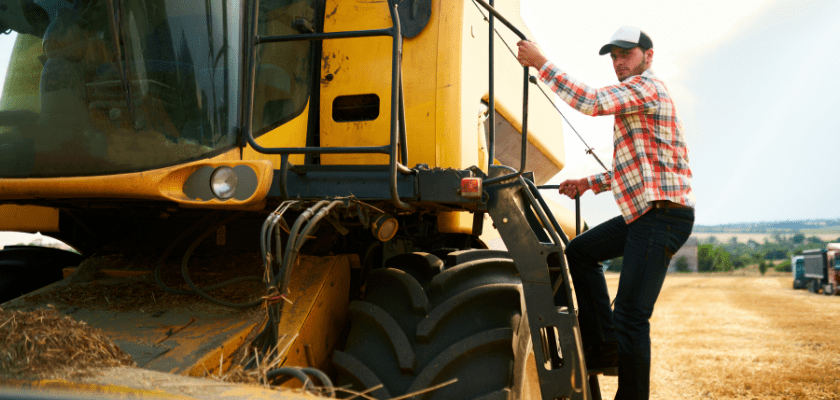Prevent slips, trips and falls in agriculture: 3 steps to staying on your feet

They may seem harmless, but slips, trips and falls are some of the most common causes of workplace injuries and deaths. They are also one of the leading injuries that cause workers to miss time at work.
Falls from height have the most severe outcome. This could involve climbing a grain bin where harnesses are not used, falling from grain/hay wagons, using ladders, lofts in barns and openings for moving items to lower levels.
Falls from the same level may not always be as catastrophic but account for 2/3 of all fall injuries. These include injuries due to leaked oil on the shop floor, loose cords or hoses and uneven or slippery surfaces.
“The onset of fall weather can be particularly tricky,” says Jay Remsik, a Workplace Safety & Prevention Services (WSPS) Consultant. “One day it's dry but the next day a sudden temperature drop has turned the walking surface into a sheet of ice.”
“Proper footwear with good tread is a valuable form of Personal Protective Equipment (PPE). Worn out tread offers no traction.," recommends Jay. "Check them each season and replace them if need be.”
Use Stop Think Act to prevent falls
Using the Stop Think Act approach to workplace safety is one way to protect yourself. These simple three words helps remind you to take a minute to stop and think before acting on a task or job.
- When mounting a tractor, stop. Evaluate the situation. Ask yourself what could go wrong?
- Next, think. Could the steps be slippery because of mud or ice? Are the steps damaged?
- Then act. Ensure you maintain three points of contact. This also goes for dismounting the tractor. It’s remarkable how many claims are made because people think they can just hop off the vehicle. If you land on uneven ground, you may suffer sprains. Pivot and face the tractor as you descend, again, maintaining three points of contact the whole time.
Taking these three steps can be the difference between walking up the stairs after a good day at work or rolling into the emergency room with an injury.
How WSPS can help
Resources
- Working with ladders and at heights in Agriculture (article and video) - Ladders are common tools used on the farm. But if not used safely, they can cause injuries or even death. Get tips to stay safe when using ladders and working at heights.
- Agricultural Safety Handout - Preventing Falls
- Agricultural Safety Handout - Proper Use of Ladders




